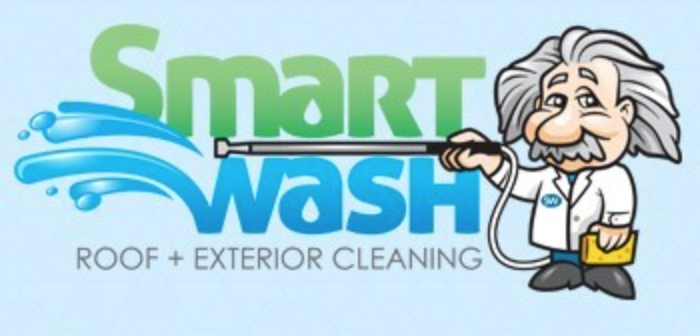Roof Cleaning
- 100% Customer Satisfaction Guarantee!
- Free Estimates
- 15+ Years of Industry Experience
- Competitive Pricing
- Friendly & Efficient Service
Why is Rooftop Cleaning Important?
“Happiness is having a roof over your head…” Your roof is one of the most important parts of your house; it protects you from the elements. Therefore, it deserves the utmost care so it lasts for years!
So take a look at your rooftop. What do you see? A nice clean surface? Or ugly black stains streaking the shingles. Rooftops are often overlooked, making them the perfect spot for mold and mildew to grow. Surprisingly, roofs can make a huge impact on the overlook look and feel of your home. That’s why it is so vital that you regularly inspect and clean it! Not only does rooftop maintenance boost curb appeal, but it protects you and your loved ones from harmful contaminants and helps preserve roofing material so it lasts for years.
If allowed to sit and thrive on your rooftop, contaminants like mold, mildew, algae, lichen, and moss will gradually wear away at the shingles and cause them to rot from the moisture buildup. When it comes to asphalt shingles, in particular, algae practically feeds off the limestone in the material. Eliminate these harmful substances with our professional services!
The Best Roof Cleaning Method
Say Goodbye to Streaks and Stains
Traditional power washing is extremely effective at removing tough dirt and stains on surfaces. However, it can severely damage more fragile materials such as siding and roofing. These surfaces require a more gentle clean. This is where soft washing comes in!
Instead of using high water pressure to blast away contaminants, soft washing relies on powerful detergents that are designed to break down mold, mildew, and more. These detergents are then rinsed away with psi (pounds per square inch) levels of 500 or below, levels similar to those of a normal garden hose. We guarantee a safe and gentle clean for your rooftop.
Our cleaning method is gentle enough to keep your shingles healthy and intact. But it’s still powerful enough to remove all signs of moss, algae, and stains. Call us for the best roof washing services in Alexandria!
Call
(703) 595-4000
Contact Us for a Free Estimate!
4 Benefits of Roof Care
Increases Curb Appeal
Avoids Repairs
Rooftop maintenance is the perfect preventative measure against early repairs. Over time, contaminants like mold and mildew will cause moisture buildup and wear down your roofing material. Give us a call and we will help keep your roof lasting for years so it can continue protecting you and your family.
Saves Time
We understand, you have a lot of things to manage. Not only does professional exterior cleaning save you money but it saves you time as well. Let us check this off your to-do list. Our technicians follow strict safety procedures to ensure a safe, efficient job.
Protects Your Health
We don’t usually think about our health when it comes to roof maintenance, but mold and mildew buildup on any surface around your home can affect your health and cause allergies. Professional exterior cleaning goes a long way in protecting the health of you and your family and keeping the air around your property clean.
Why Hire a Professional?
Many homeowners in Alexandria love DIY projects! And for many things, doing it yourself is a great idea. But that’s not the case with pressure washing. Why not? In untrained hands, a power washer can become a weapon that destroys your home instead of a tool to restore it.
Using too much power can cause several years worth of damage to many of the more delicate surfaces of your house such as your roof, siding, and deck. That could cause some expensive repairs. And without experience using these tools, you could be risking your safety!
The solution? Call Smart Wash of Alexandria, VA! We have the tools, training, and experience to get the job done right. And you won’t have to let this project eat into your free time.
Roofing Materials We Clean in Alexandria
- Asphalt
- Cedar Shake
- Metal
- Slate
- Wood
- And more!
Cleaning Services We Provide
- Brick
- Concrete
- Decks
- Houses
- Roofs
- Churches
- Restaurants
- Construction Site Clean Up
- Power Washing
- Rust Removal
- Hospitality Cleaning
- Hanging Christmas Lights
Call
(703) 595-4000
Contact Us for a Free Estimate!
